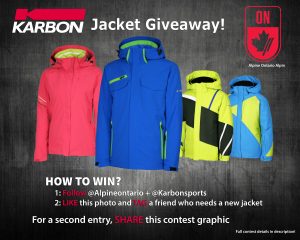This week I sit down with a real live coach and get an insiders perspective of the Killington World Cup event held in Vermont this past November. Jacques Reid has been coaching athletes all over Canada for more than 20 years at the Provincial and now, International level but still doesn’t have a coaching philosophy under his email signature…
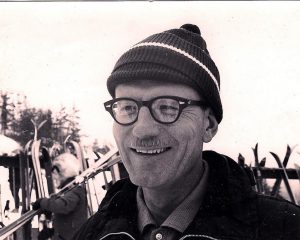
Dr. Hal Kreiner, 1975
“What does it mean to live, work, and raise your family on the slopes of a small family ski resort in Northern Ontario? What are the joys? The sacrifices? The consequences of committing your work and family life to the sport of skiing? In this series, Lori Knowles interviews generations of families living “the dream”. This week she talks with Laurie Kreiner, whose family ran Timmins Ski Club… and made it all the way to the Olympics.”
Check out full article here: https://snowsportsculture.com/small-town-olympic-ski-dreams-kreiners-timmins-ontario/
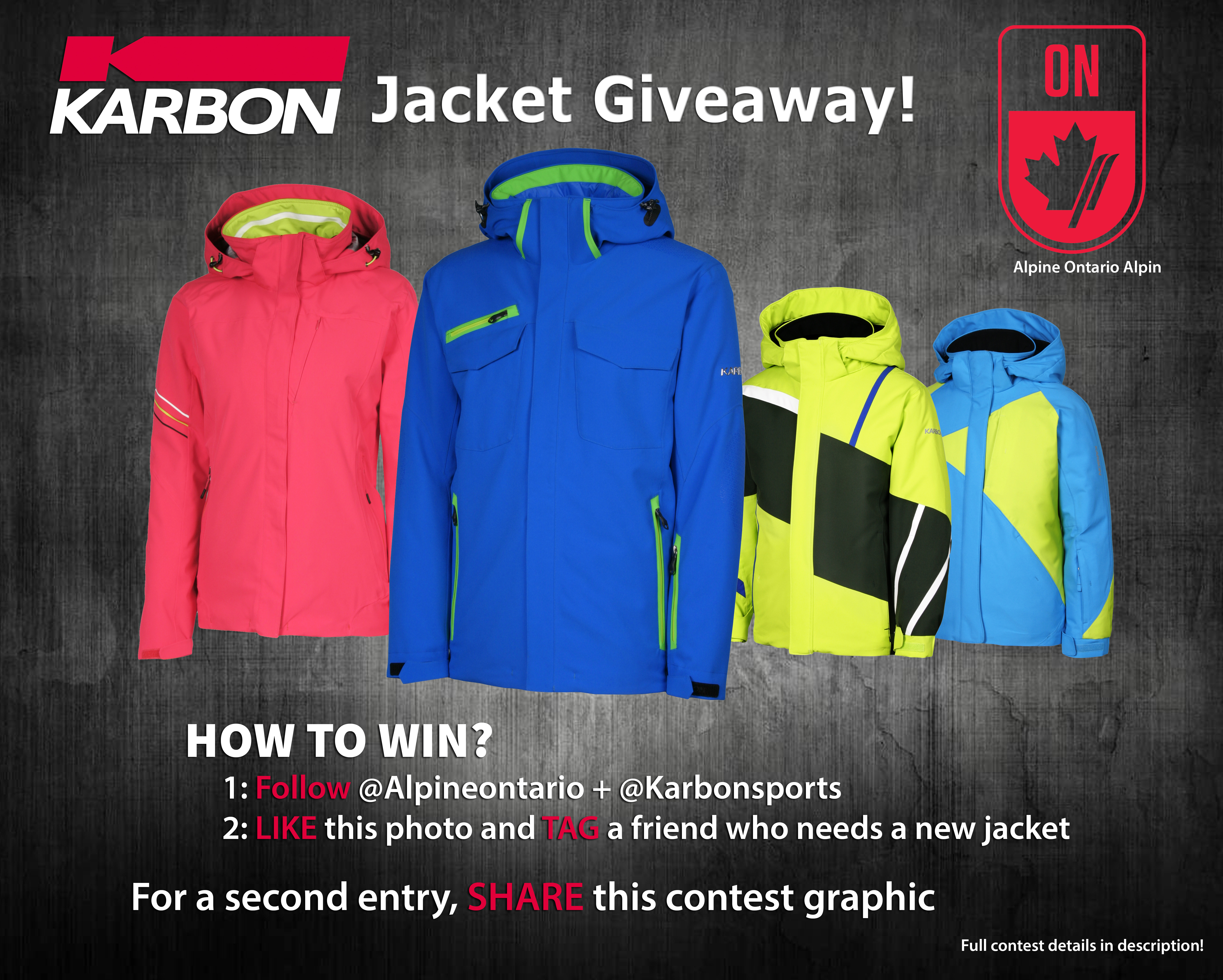
Check out our new Alpine Ontario and Karbon Sports winter jacket Giveaway on Instagram and Facebook!
www.instagram.com/alpineontario
www.instagram.com/karbonsports
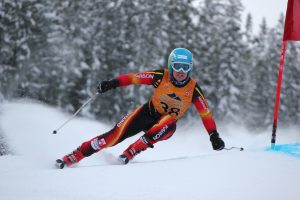
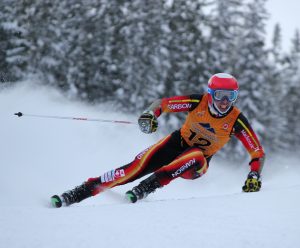
Corey McConville (Devils Glen) and Jake Gougeon (Georgian Peaks) at Panorama Nor Am
After an extensive prep period of time in the gym, time on snow, time hoping for snow, and general hard work from the entire team, December brings with it the start of the competition season for the Ontario Ski Team. A time to bring together all of your training, efforts, and dedication and measure yourself against strong national and international competition. Our OST athletes have responded to this challenge with a string of successful and career-best results to start the season.
After beginning the season together with slalom races in Norquay, (where the team scored a U18 win for Hunter Watson and a U18 podium for Zach Mayne) the team divided its efforts with a group staying in the west to compete in the first block of Nor Am events in Lake Louise and Panorama, and another group returning to the east to compete at the first races of the Super Series in Quebec.
Nor Ams kicked off in the west with downhill at Lake Louise. Athletes battled brutally cold temperatures as they raced a shortened version of the World Cup track. On paper the results were not substantial, but the OST athletes showed impressive mental strength as they attacked the course with limited speed experience and limited time on the track. Shifting to Panorama for Super-G and tech, the guys had their first taste of Nor Am success. OST member Jake Gougeon (Georgian Peaks/Burke Mountain Academy) lead the way with a 12th and 13th place finish in each of the GS races, respectively, and stood on the U21 podium in the second race. With these results, Jake scored the first Nor Am GS points of his career and now sits in the first seed in GS Nor Am standings. Both Henry Luel (Georgian Peaks/National Ski Academy) and Corey McConville (Devil’s Glen) qualified for second runs in a Nor Am for the first time their careers in the slaloms.
In the east, the team exhibited their slalom prowess at the first slalom races of the Super Series at Val St. Come. Hunter Watson (Camp Fortune) took home the first FIS win of his career on the opening day of completion and the second FIS podium of career the follow day. Adding to the team’s podium appearances, Griffin Copp finished 3rd in the first race to score his first FIS podium result, and Zach Mayne taking 3rd on the U18 podium in the second race.
A young women’s team has shown great determination as they looked to score the first FIS points of their respective careers. A majority of the team has worked their way into the slalom rankings with solid results at Norquay and Val St. Come against tough competition. After battling back from an injury last season, Camille Vibert (Georgian Peaks) scored the first top-10 of her career with an 8th in Val St. Come.
With podium success still fresh in their minds and two SL and two GS races on the schedule before returning to Ontario, the OST athletes hope to continue their strong start to the season. Don’t forget to come out and cheer on the OST as they take to the slopes of Craigleith for the NZ Cup on December 29.
Cam McKenzie, OST Mens Head Coach
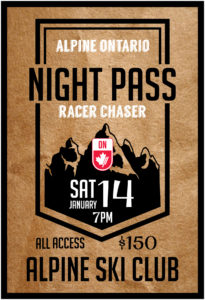 On January 14th, 2017, 7pm – 10pm, the entire ski community is invited to the new Alpine Ski Club for an evening that will kick off the 2017 ski season. Guests will be entertained by the Shane Cloutier Band, and able to enjoy fabulous fare from Men with Knives. And, last but not least, a live auction featuring one-of-a-kind experiences.
On January 14th, 2017, 7pm – 10pm, the entire ski community is invited to the new Alpine Ski Club for an evening that will kick off the 2017 ski season. Guests will be entertained by the Shane Cloutier Band, and able to enjoy fabulous fare from Men with Knives. And, last but not least, a live auction featuring one-of-a-kind experiences.
For Tickets
Tickets are $150 each. You can buy tickets directly through a member of the racer chaser committee, at the AOA office, or online by clicking here .
To Donate Auction Items
AOA is seeking silent and live auction items for the Racer Chaser on January 14th. Please contact communications@alpineontario.ca if you have an item or service you would like to contribute to the evening. All contributions can be mailed to Stacie Smith, Alpine Ontario Alpin, 39A Stewart Road, Collingwood, ON L9Y 4M7.
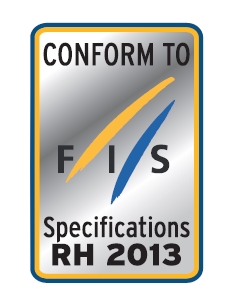
Please be advised that as per the New International FIS standards, ACA now requires FIS compliant helmets for ALL U14+ racing athletes. More specifics can be found in the 2016-17 National Rules and Policies.
The FIS rule reads as follows from the FIS Specifications for Competition Equipment and Commercial Markings page 8, 6.2.1 Crash Helmets/GS/SG/DH:
Label attesting conformity with FIS specifications for racing helmets (GS/SG/DH):
Fulfilment of requirements is to be attested by a specific standardised conformity label affixed in a non-removable way at the back of the helmet in a location which is and shall remain visible. The label shall in particular not be covered by the goggle strap. The conformity label is shown in the attachment (see page 44 and below). It shall include the following text: «Racing helmet conform to FIS specifications 2013». Labels affixed by manufacturers shall comply with the specifications set forth in the attachment.
The conformity label attests that the manufacturer has obtained the required certifications (EN 1077 A and ASTM 2040) and obtained a test protocol confirming that the concerned helmet model fulfills the requirements set forth above under 6.2.1. Upon request, the certification documentation and test protocol shall be provided to the FIS.
Also, please be advised that back protectors (properly fit) are strongly recommended for any speed racing and AOA will be considering adopting a mandatory rule for the 2017/18 season. ACA and FIS do not mandate back protectors for speed racing yet but we anticipate this will be the case for the 2017/18 season.


Alpine Ontario Alpin and Karbon Announce This Year’s Karbon Bursary Winners!
Click here to view the 2016/17 Quest for Gold Selection Criteria for Para Alpine [wpdm_package id=2899 template=”link-template-calltoaction3.php”]
Quest for Gold Selection Criteria – Able Bodied 2016/17 Now Available. Click here for the document.
Thank you for attending the Spring 2016 AOA Fitness Testing on Saturday October 1st. Results can be found by clicking here.
Please note that Spring Fitness Testing will take place at the Toronto Track and Field Centre, York University, Saturday May 6th. Please add this date to your calendar for spring planning. All athlete’s planning on attending the 2017 U14 and U16 Provincial Championships will be required to submit a fitness test dated between Sept 1-Dec 31 by Dec 31, 2016.
Below are the descriptions of the tests that were performed:
Penta Jump– This repeated double leg horizontal jump requires a considerable amount of lower body coordination and power. This is directly related to explosive speed that you can generate through your hips during a turn. To improve upon this test, a combination of strength and speed (plyometrics) exercises should be done. Here are 3 examples: 1, 2,3. (click the links to watch videos)
Standing Medicine Ball Throw – This test measures power and coordination generated from a bottom up fashion. It requires you to load your legs and trunk and maintain stability before achieving any vigorous movement of the upper body to propel a medicine ball weighing approx. 4% of body weight. To improve upon this test work on explosive type movements. Click on the 2 examples here: 1, 2.
Vertical Jumps– The counter-movement vertical jump incorporates the Central Nervous System to coordinate the segments to create lower body power. This is directly related to explosive speed that you can generate through your legs during a turn. To improve upon this test, a combination of strength and speed/plyometric exercises should be done. The single leg jump ratio should be as close to 1.0 as possible. The further away from 1.0 your score is, the more discrepancy in coordination/ power between right and left legs. If you have one leg significantly weaker you should continue with unilateral strength/ power work (click on these examples 1,2,3) to balance this out and always start your sets with the weaker side.
Hex Rail – The hex rail measures agility or the ability to change directions quickly. Primarily focused on the lower body and core muscles, the hex rail displays anaerobic power and shadows the quick multi-directional movements used in many sports. The hex rail is done 2-3x around (depending on age) in a clockwise direction followed by a brief rest then 2-3x counterclockwise. To improve on speed and agility, work on quick feet drills like cone high knees, Lateral Shuffles and slalom runs.
Movement Screens – Movement Screen 1 is an Overhead squat movement with a dowel. If technique was perfect a score of 3/3 was recorded. If technique broke down slightly then a score of 2/3 was awarded. If there were major alignment issues (lack of ankle mobility or knee stability to ensure safe ski racing) then a score of less than 2 was awarded. If there was pain during any part of the movement then a score of 0 was recorded. If a score of less than 2 was received it is recommended that you follow up with a sports therapist (sports med doctors, athletic therapist, physiotherapist, exercise physiologist, etc.) to have an alignment check performed to rule out any further red flags and to start some correctives to ensure safety this upcoming ski season.
Movement Screen2 was a straight leg raise performed to assess posterior chain (calf, hamstring, back) range of motion. If a score of below 2 was noted then the following corrective should be performed daily 10-20 times pain free. If a score of 0 was given then follow up with a health professional is needed.
60/ 90–second Box Jump– This test measures the anaerobic endurance of the lower body muscles by recording the number of jumps on a 10-40cm box (age dependent) as the test progresses. This is one of the major energy systems responsible for success in ski racing. We are looking at overall number of touches over the 60/90 seconds (age dependent). Track and field, Cross country running, mountain biking, fartlek and intervals will help build efficiency in this system.
Australian Institute Shuttle test (AIS) – The ‘beep’ test is an aerobic (endurance) test that measures the athletes’ ability to take in and utilize oxygen and provides an indirect VO2 measurement. A high VO2 allows the athlete to train and compete at higher intensities for longer periods of time as well as recover quicker between races and training days. Mountain biking and cross country are two good ways to increase your V02.
The tests were selected based on the key physical parameters required to both perform and maintain safety throughout the ski season. These are all activities that can be easily reproduced for re-testing purposes and require very little equipment to do so.
